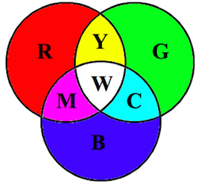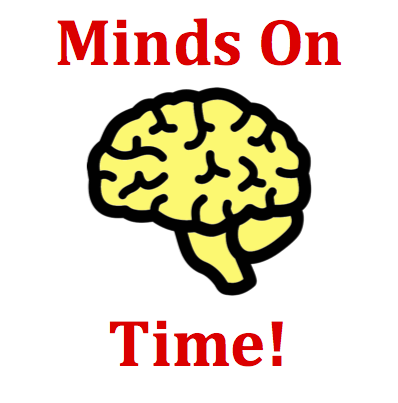Hold down the T key for 3 seconds to activate the audio accessibility mode, at which point you can click the K key to pause and resume audio. Useful for the Check Your Understanding and See Answers.
Mission LC6 Primary Pigments - Question Group 11 Help

Most color printing processes use cyan, magenta, and yellow pigments to create a colored image on a white sheet of paper. Suppose that magenta and yellow paints are imparted to a portion of a paper and then viewed under white light. These paints would absorb ____ light and appear _____.

Objects are usually viewed under white light. White light can be thought of as an combination of the three primary colors of light - red (R), green (G) and blue (B). Primary pigments are imparted to objects to subtract (absorb) one or more of the three primary colors of light. Any primary color of light that is not subtracted (absorbed) is reflected and thus contributes to the color appearance of the object.

 Many students of physics have seen a diagram similar to the one shown at the right. The diagram depicts three circles colored with the primary colors of light - red, green and blue. The primary colored circles overlap to produce other colors of light, known as the secondary colors of light: cyan (C), magenta (M) and yellow (Y). These three colors - C, M, Y - are also the three primary colors of paint. The colors of light that they absorb are those directly opposite them on the color wheel. Cyan pigment absorbs red light. Magenta pigment absorbs green light. And yellow pigment absorbs blue light.
Many students of physics have seen a diagram similar to the one shown at the right. The diagram depicts three circles colored with the primary colors of light - red, green and blue. The primary colored circles overlap to produce other colors of light, known as the secondary colors of light: cyan (C), magenta (M) and yellow (Y). These three colors - C, M, Y - are also the three primary colors of paint. The colors of light that they absorb are those directly opposite them on the color wheel. Cyan pigment absorbs red light. Magenta pigment absorbs green light. And yellow pigment absorbs blue light.
Red, green and blue light shine upon the paper. A primary pigment subtracts a single primary color of light. If two pigments are added to the paper, then two of the three primary light colors will be subtracted (absorbed). The other primary color will be reflected and will thus determine the color appearance of the object. So you need to use the color wheel in the Dig That Diagram section to determine which primary light colors are absorbed by magenta and yellow pigments. The light color that is not absorbed is reflected and will determine the color appearance of the paper.
